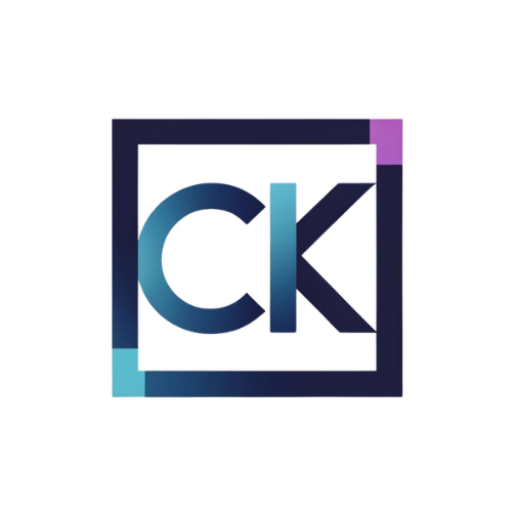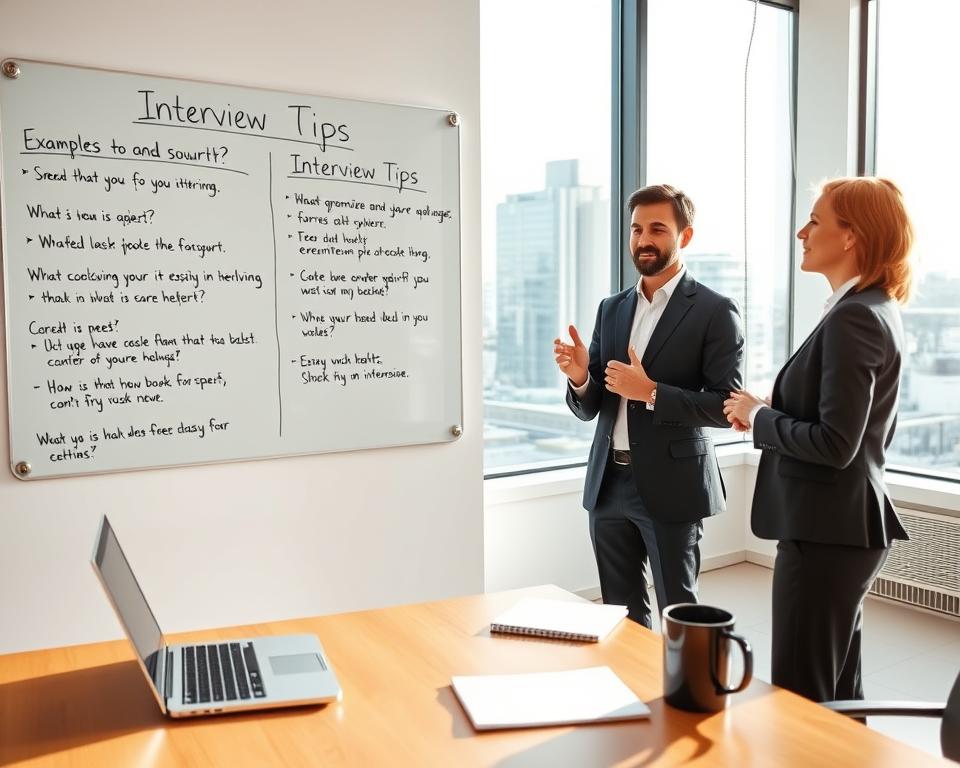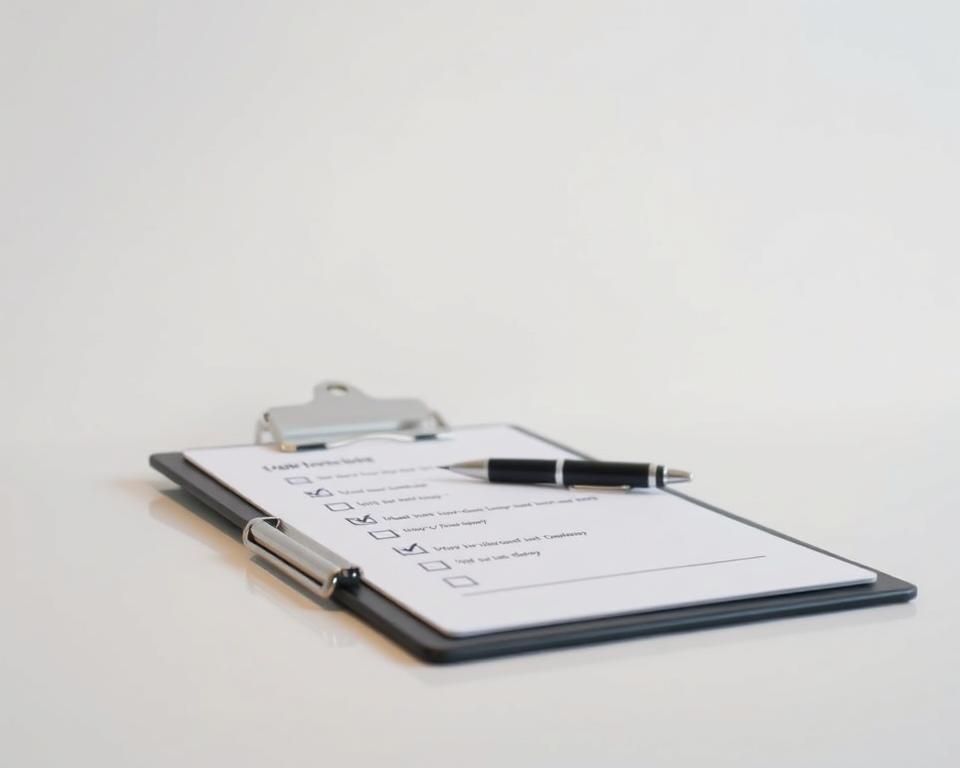Anúncios
Interview tips guide helps you prepare fast and well for screens and in-person meetings in today’s competitive hiring market.
How much can a short routine change your next hiring conversation? You’ll learn to avoid thin research, rambling answers, weak presence, and poor follow-up by using simple, repeatable steps. Start by arriving 10–15 minutes early, greeting warmly, and knowing names and pronunciations.
We’ll cover how to bring a few printed resumes, speak honestly and concisely, and prepare tailored questions after scanning recent news and LinkedIn. Expect multiple rounds, practice video checks for clear lighting and audio, and use real examples—like organizing work in Trello—to show systems that keep you calm under pressure.
Adapt these steps to your company, role, and career stage: learn when to discuss salary, how to close with next steps, and why a thoughtful thank-you note still matters. Build a simple system you can reuse so you save time, reduce stress, and present your best work.
Interview tips guide
Start by shaping preparation to the role, the company, and your story. Do this so you arrive clear and confident. Expect more than one round and plan for both video and in-person formats.
Anúncios
This section turns common pitfalls into simple, repeatable steps. You’ll learn what to research, how to shape an answer around outcomes, and when to raise salary appropriately. Practice aloud so your chronology and examples come quickly under pressure.
- Set purpose: convert common mistakes into actions that keep momentum across interviews.
- Keep it practical: research the company, shape concise answers, and prepare tailored questions for each interviewer.
- Scale systems: reusable notes, short frameworks, and answers that fit a 30–60 minute conversation.
- Presence matters: body language, pacing, and on-camera energy travel across formats.
- Logistics: make sure tech, outfit, and travel are ready the day before to avoid last-minute stress.
Be honest, professional, and adaptable. Use these steps as a framework and tweak them to reflect your experience, skills, and the team you hope to join.
Research that goes beyond the homepage
Look deeper than the main site to gather current signals about the team, customers, and product. That extra work helps you speak to real priorities and show immediate value for the role.
Start with live sources: scan recent news releases and posts on LinkedIn, Facebook, and X to spot launches, challenges, or product updates the company and its employees discuss.
Company
Note 3–5 verified findings about priorities and public initiatives. Capture tone, vocabulary, and any sales or product push that matters to your role.
Customers
Use the product before your first interview. Sign up for a trial, run a basic workflow, or watch a demo so you can describe the customer journey in concrete terms.
Team
Make a short list of interviewers and study their profiles. Prepare one tailored question per person that reflects their role—this shows you did deeper research.
- Build a compact research list: company priorities, customer pains, team goals (3–5 bullets each).
- Map one past sales or support win to a current company pain.
- Pull one competitor headline and one industry data point to show market awareness.
- Keep notes factual and avoid rumors to maintain credibility with the interviewer.
For more prep resources, see the job-interview cheat sheet for quick checklists you can reuse.
Anticipate the interview questions you’re most likely to face
Plan concise responses that pair a skill with a metric or outcome. Start by listing the common interview questions for your role and map each to one clear example from your experience.
Tell me about yourself: draft a 60–90 second answer that links 2–3 skills to results and ends with how you will help the team on day one. Keep it specific. Name a tool, a process, or a recent win.
Strengths and weaknesses: choose a strength that matches the role and give one quantified example. For a weakness, show progress steps and recent improvement so the answer reads as growth, not excuse.
- Prepare 3–5 quantified achievements: include scope (team size, users), percent change, and timeframe.
- Keep a short bank of examples for collaboration, problem solving, leadership, and learning.
- Include one concise sales or customer-impact example when relevant to show business value.
When a question is broad, restate it to confirm focus. Then answer in two or three crisp parts and close with a result or learning. Practice aloud to tighten pacing and cut jargon.
Structure answers with STAR and keep them succinct
A simple story pattern helps you answer with purpose and speed. Use Situation, Task, Action, Result to keep your reply focused and easy to follow. Start with one short line of context so the interviewer grasps the situation quickly.
Task: one sentence that states the goal or constraint.
- Action: describe 2–3 sentences about the method you chose and why it matched the role. Keep it concrete—what you did and how you coordinated with others.
- Result: finish with numbers or clear outcomes: time saved, revenue gained, or quality improved.
Keep most answers to 60–120 seconds. Practice aloud to trim filler; if you drift, pause and restate the question before continuing.
Bring one reliable example tied to collaboration or sales impact. Prepare a backup example per competency. Close with a single sentence on what you learned or a method you changed—this shows growth and keeps your answers memorable.
Show you stay organized with specific systems and benefits
Explain the concrete systems you use so work stays visible and the team moves without friction. Use clear examples you can state quickly in an interview to show the method and the measurable benefit.
Tools and cadence: calendars, boards, and scheduled focus time
You block two focus sessions weekly to plan, create, and schedule work; calendars make deadlines visible. On Trello you keep a personal board (color-coded by priority) and a shared team board with clear owners so everyone knows who does what for each role.
Coordination: pausing campaigns and looping stakeholders fast
For an incident case, tag stakeholders, suspend scheduled posts in Hootsuite, and start a Slack thread to reassess. Say this step in the interview: the tool, the cadence, and the measurable benefit in one sentence. That keeps cross-functional work, including sales, aligned.
Shared knowledge: central folders, assets, and retros for team learning
Keep one Google Drive folder per campaign with strategy one-pagers, assets, post records, reports, and retros. This example reduces rework and speeds handoffs.
- Benefits: fewer surprises, faster coordination, and better reuse of assets.
- Map tools to the company stack and make sure processes scale with team size.
- Proof point: shorter cycle times and cleaner handoffs show real impact.
Presence matters: body language, pacing, and calm under pressure
Your presence can change how people remember your answers, so shape it with small, consistent habits. Use posture, pacing, and simple routines to steady your voice and focus before and during an interview.
Body language: open posture, steady eye contact, and engaged listening
Sit with an open posture, avoid crossed arms, and keep steady but natural eye contact. Nod to show engaged listening so people feel heard without a stare down.
Go-to stall phrase: buy a moment to think without dead air
When a question lands, repeat it briefly or say, “That’s a great question; I’d say…” This gives you time and keeps the flow. Use short pauses instead of filler sounds to gather your thoughts.
Rest and routine: sleep and pre-interview rituals to sharpen focus
Get enough rest the night before and eat something light. Pace your speech and breathe from your diaphragm to steady energy. Practice sitting and standing positions so your gestures feel natural on camera or in person.
- Tailor your presence to the role: warmer storytelling for customer-facing work, tighter structure for technical roles.
- Show leadership by staying calm under pressure: name a challenge, then move to solutions with steady tone.
- Close each answer with one short summary sentence to reinforce your main point and respect the interviewer’s time.
Be on time, prepared, and personable from the first hello
Arrive calm and ready. Plan your route so you get there 10–15 minutes early and start composed. A small buffer at check-in keeps your nerves steady and your opening minutes focused.
Arrive early and greet warmly
Greet with a handshake and a smile and use the interviewer’s name correctly. That simple step builds quick rapport and shows respect for the room.
Know names and thank coordinators
Note the coordinator’s name and speak to support staff courteously. Employers notice how you treat people at every step.
Build quick rapport; follow the lead
Have a short list of tailored questions and neat printed resumes in a folder so you can move from small talk to substantive work smoothly.
- Keep your phone silenced and out of view—make sure it stays off during the meeting.
- If nerves appear, breathe slowly, reset posture, and speak clearly.
- If you’re delayed, send a brief update with your ETA and a polite apology.
End each meeting with a smile and a quick thank-you to leave a professional, positive impression.
What to bring and how to dress, in person and on video
A short checklist for clothes and documents helps you arrive calm and ready to perform. Bring items that keep your focus on answers, not on small problems that are easy to prevent.
Resumes and documents: save a clean resume as a PDF and email it to yourself so you can share quickly. Carry several printed resumes in a neat folder and store extra papers flat so you can access a resume without rustling.
Interview kit: pack a small notepad, a reliable pen, and a tiny emergency kit—Band‑Aids, stain stick, a snack, water, umbrella, and breath mints. These items save time and calm nerves when something unexpected happens.
Dress for company culture: choose business or business casual for first meetings and keep accessories minimal. Try on your outfit the day before to check fit and comfort, and test it on camera if you have a video session scheduled.
- Save your resume as a PDF and email it to yourself before the day of the meeting.
- Bring printed resumes, a notepad, and a good pen to record quick notes after each round.
- Test camera framing, lighting, and audio with your outfit to avoid pattern or color problems on video.
- Build a reusable packing list so you save time and arrive prepared every time.
Listen first, clarify, and answer the question asked
Let the question land: restate the core ask in one line so you and the interviewer share the same focus.
If the question is vague, ask a single clarifying prompt about scope, metric, or time frame. This small step makes sure your answer solves the right problem and saves time for both of you.
Use a simple structure: make two clear points, add a brief result, and then link back to the original question in one sentence.
- Listen without interrupting, then restate the question to confirm you understood it.
- If it’s multi-part, number your response and check off each part as you go.
- Pause to buy a moment when needed; use a short stall phrase rather than rambling.
Keep jargon light so any interviewer can follow you. Track time in your head—most answers fit 60–120 seconds—and offer more detail only if asked. Finish with a one-line summary that ties your answer back to the original question and, if helpful, say you can expand on any point.
Communicate with integrity and professionalism
Speak with honesty and clarity so your answers match your record and values. Accurate, respectful language helps you build trust with the employer and the interviewer.
Tell the truth; avoid exaggeration
If you don’t know something, say so and explain how you would find the answer. Keep claims factual and verifiable. Avoid promises you can’t keep; accuracy earns credibility faster than flashy language.
Watch your grammar and choose clear, simple language
Use short sentences and plain words to make your points easy to follow. Clear speech reduces misunderstandings and shows strong thinking for business conversations.
Never slight a teacher, colleague, employer, or school
Speak respectfully about past people and places. Interviewers notice how you treat others. Share credit for team wins to show leadership and maturity.
- Keep claims verifiable; describe methods, not secrets.
- Correct yourself briefly if you misspeak, then move on.
- Avoid confidential details; summarize outcomes at the right level.
- Close answers with what you learned and how you apply it at work.
Handle tricky or personal questions without losing composure
Handle awkward or personal questions with a brief, calm reply that steers the talk back to what you can do for the role. Pause, acknowledge the question, then pivot to job-relevant qualifications so the conversation stays professional and useful.
Redirect to job-relevant qualifications respectfully
When a question feels too personal, thank the interviewer and pivot. Try a line like, “I prefer to focus on how my skills map to this role,” then give a short example of a related accomplishment.
- Use neutral language to keep the exchange constructive and calm.
- Share only necessary information; you do not have to disclose private details to prove capability.
- Prepare one or two redirect phrases in advance so your answer flows without awkward silence.
Maintain poise even if a question feels inappropriate
If an interviewer presses, ask a clarifying question about the job requirement behind the question. That refocuses the discussion on role-related criteria.
- Provide a brief, job-focused example that shows the competency the question likely sought.
- Stay composed and professional; calm handling demonstrates leadership and sound judgment.
- If the case escalates, state politely you prefer to keep the conversation centered on qualifications and note any red flags afterward for your own decision-making.
Balance transparency with boundaries: keep answers relevant, protect sensitive information, and treat the exchange respectfully. Your calm response is itself a strong signal of leadership to the employer.
Salary and benefits: timing and research
Discussing pay and perks at the right moment helps you focus on fit instead of negotiating from uncertainty.
Do your homework first. Use salary surveys, career center data, and verified market tools to build a fair range. Record sources so your numbers are evidence, not guesses.
Early in a meeting, keep the focus on the role, scope, and business impact. Let the interviewer raise compensation or ask if you have a target range.
- When asked early, share a range grounded in market information and your experience, and note you’re open to the full compensation package.
- For sales or variable-comp roles, clarify plan structure: base, variable, accelerators, and territory assumptions so you understand real earnings potential.
- Track timelines: many companies decide after multiple interviews, so specifics often firm up later in the process.
Keep the tone collaborative. Tie expectations to responsibilities and team size rather than past pay. Ask one clear question about benefits or total rewards when timing feels right.
At the end, record key numbers and definitions, and reconfirm next steps and decision time so you can compare opportunities clearly later.
Virtual interviews: modern etiquette for video calls
Run a quick tech rehearsal the day before and again just before your call. This keeps the meeting focused on substance, not troubleshooting.
Tech check: audio, camera, platform, and backup plan
Test your platform, audio, and camera 24 hours and 15 minutes before start to make sure updates are done.
Close bandwidth apps and silence notifications to reduce lag. Have a phone hotspot or second device ready as a backup and share that plan with the company if you need to rejoin quickly.
Environment: neutral background, lighting, and minimal noise
Frame yourself at eye level with soft, even lighting and a tidy background so the focus stays on you.
Wear camera-friendly colors and avoid busy patterns; do a short recording to check how your outfit and gestures read on screen.
On-camera energy: speak crisply, sit upright, and gesture naturally
Sit upright, lean in slightly when listening, and use small, natural gestures so your on-camera energy feels engaged.
Keep answers crisp and structured: latency can make rambling harder to follow. If delay causes you to talk over someone, pause, smile, and invite them to continue. Have links to work samples ready to paste in chat as an example.
Close strong and follow up with purpose
Close your conversation on a clear, forward-looking note so the next steps are obvious to both sides. Ask one short question about process and timeline, then restate your interest and the value you bring to the role and team.
Ask about next steps and reiterate interest
Before leaving, ask which stage comes next and when a decision is expected. Name one specific way your work would help the company and the team.
Send a tailored thank-you note promptly
Send a same-day thank-you that references one point the interviewer raised. Keep it brief, warm, and professional, and confirm the best channel for any follow-up materials.
Capture notes right after to refine your approach
Right after you leave, write quick notes on what went well, any unanswered questions, and one example you want to strengthen next time. If you promised a work sample or an answer, make sure you deliver it clearly labeled and on time.
- Quick close: ask about timeline, then restate interest in one sentence.
- Personal thanks: thank each interviewer by name and confirm follow-up method.
- Same-day note: send a tailored, concise message that shows you listened.
- Immediate notes: capture actions, refinements, and new questions for your prep.
- Track response windows in a simple spreadsheet to follow up politely if needed.
- Keep follow-ups concise and value-focused to maintain a strong impression.
- Stay enthusiastic but do not overpromise; respect the company’s process.
Manage nerves across multiple rounds and long processes
When interviews stretch over days, practical rhythms help you conserve energy and stay steady.

Breathing, pacing, and micro-breaks to reset energy
Use box breathing between sessions: inhale four counts, hold four, exhale four, hold four. Repeat for one minute to reset focus and lower stress.
Schedule short pauses to stand, drink water, and scan a single example before you return. Small breaks keep your energy even and help you answer crisply when time is short.
Know your chronology so examples come quickly to mind
Build a one-page chronology by years that lists roles, key projects, and results. Practice a 60-second summary and a 2-minute deeper example for each role so recall is fast under pressure.
- Practice smooth bridge sentences to move between topics across different interviewers.
- If nerves rise, label the feeling silently and refocus on the next question to regain control.
- Track rest, meals, and logistics during multi-day processes so basics don’t undercut performance.
After each session, jot two quick notes: what to keep and what to tweak. This simple loop preserves clarity across rounds and supports your long-term career momentum.
Conclusion
,Wrap up your preparation by treating each meeting as a learning step toward the next role.
Make sure you send a same-day thank-you and record one clear takeaway. Don’t expect an immediate offer; steady preparation, clear answers, and respectful follow-up move your career forward.
Adapt each step to your industry, company, and team. Capture information from every conversation, refine examples, and protect your energy during long processes.
Consider professional feedback or mentorship for targeted practice on specific questions. For practical checklists on how to prepare, see this resource on how to prepare.
Close with confidence and gratitude—small, consistent actions across every point add up to stronger results on your path.



